Building on the bedrock of KODAK 35mm film, DP Rodrigo Prieto AMC ASC's camera honors heritage and depicts deception for Martin Scorsese's 'Killers of the Flower Moon'
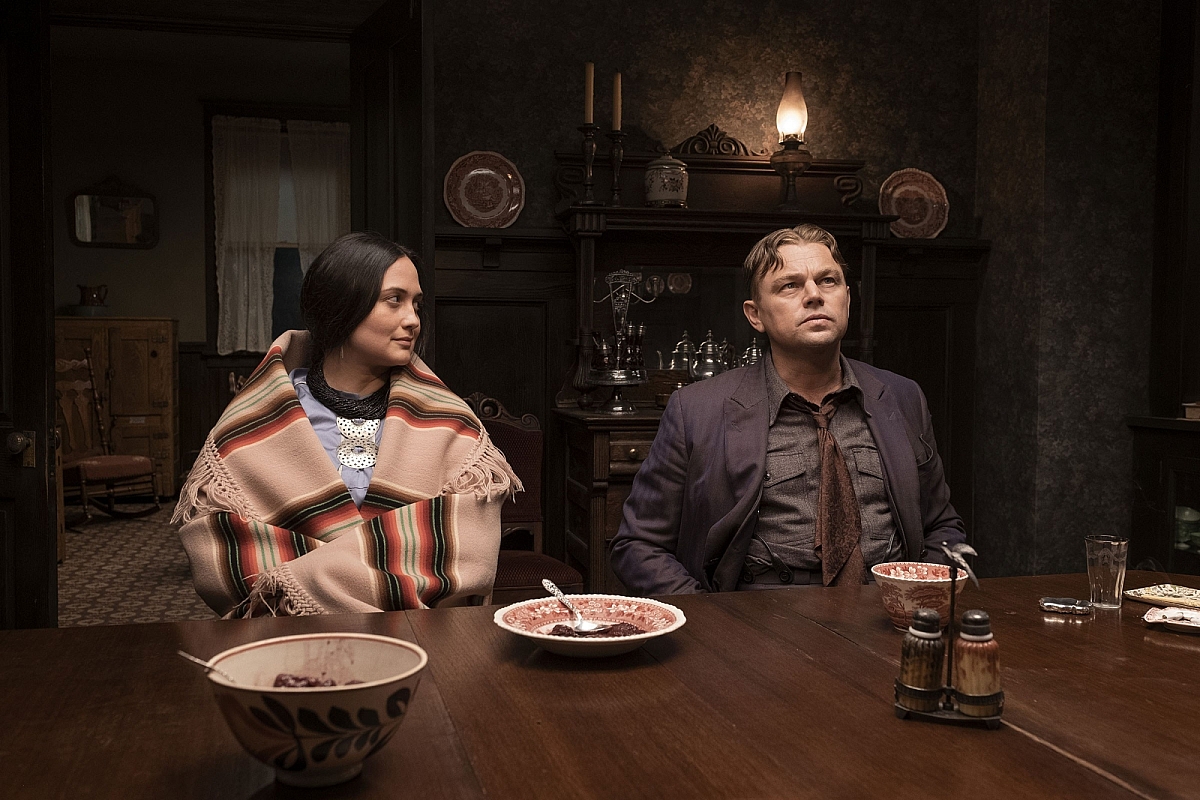
A scene from KILLERS OF THE FLOWER MOON, directed by Martin Scorsese. Photo by Melinda Sue Gordon. Courtesy of Apple.
Shooting on a foundation of KODAK 35mm color and B&W filmstocks, Mexican DP Rodrigo Prieto AMC ASC conjured up a variety of looks that honor the heritage of the Osage people and depict their deadly deception for Martin Scorsese's acclaimed period-thriller Killers of the Flower Moon.
Adapted from David Grann's 2017 best-selling non-fiction book – Killers of the Flower Moon: The Osage Murders and the Birth of the FBI – the plot centers on the gruesome real-life murders of multiple native Americans in the Osage Nation, Oklahoma, during the 1920s, after oil was discovered on their tribal lands and their wealth was stolen.
Costing an estimated $200 million and framed in epic Anamorphic widescreen aspect ratio, the film was directed and produced by Scorsese from a screenplay he co-write with Eric Roth. Robert De Niro stars as William Hale, who orchestrates the murderously Machiavellian conspiracy to rob the Osage of their wealth, alongside Leonardo DiCaprio as Ernest Buckhart, the feckless nephew who does his Uncle William's bidding, with Lily Gladstone playing Mollie, an Osage woman who Ernest marries for the sole purpose of finagling her considerable finances by deadly means.
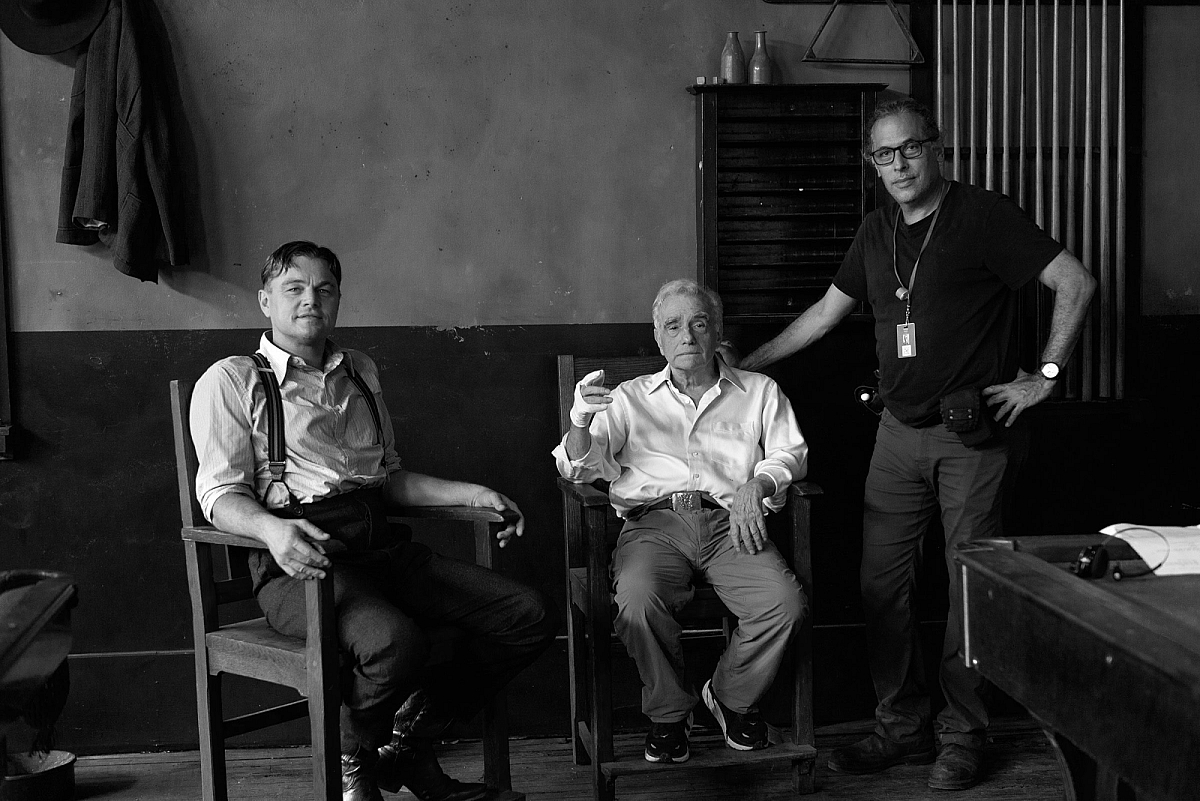
Leonardo DiCaprio, Martin Scorsese and DP Rodrigo Prieto AMC ASC during production on KILLERS OF THE FLOWER MOON. Photo by Melinda Sue Gordon. Courtesy of Apple.
Killers of the Flower Moon premiered in May 2023 at the Cannes Film Festival and was released theatrically in October by Paramount Pictures and Apple Original Film. It received critical acclaim worldwide for Scorsese's direction, central performances and Prieto's cinematography. The film was nominated for ten Academy Awards, with Prieto receiving prestigious Oscar®, BAFTA, ASC and BSC Award nods for his work on the production.
Prieto forged his early career in Mexico and shot to international acclaim with his work on Alejandro González Iñárritu's Amores Perros (2000), which earned him the prestigious Golden Frog at Camerimage. Killers of the Flower Moon is his fourth movie collaboration with Scorsese, following The Wolf of Wall Street (2013), Silence (2016) and The Irishman (2019), and represents his fourth Academy Award nomination alongside Ang Lee's Brokeback Mountain (2005), Silence and The Irishman – all of which were shot on KODAK 35mm film.
In preparation for the production of Killers of the Flower Moon, and to help portray an accurate depiction of the period, place and people in the movie, many of the production team, including Scorsese and Prieto, spent time with members of the Osage leaders, local consultants and cultural advisors.
Principal photography on Killers of the Flower Moon took place between April and October 2021 at locations around in Osage County, home to the federally-recognized Osage Nation of native Americans and where the terrible events took place.
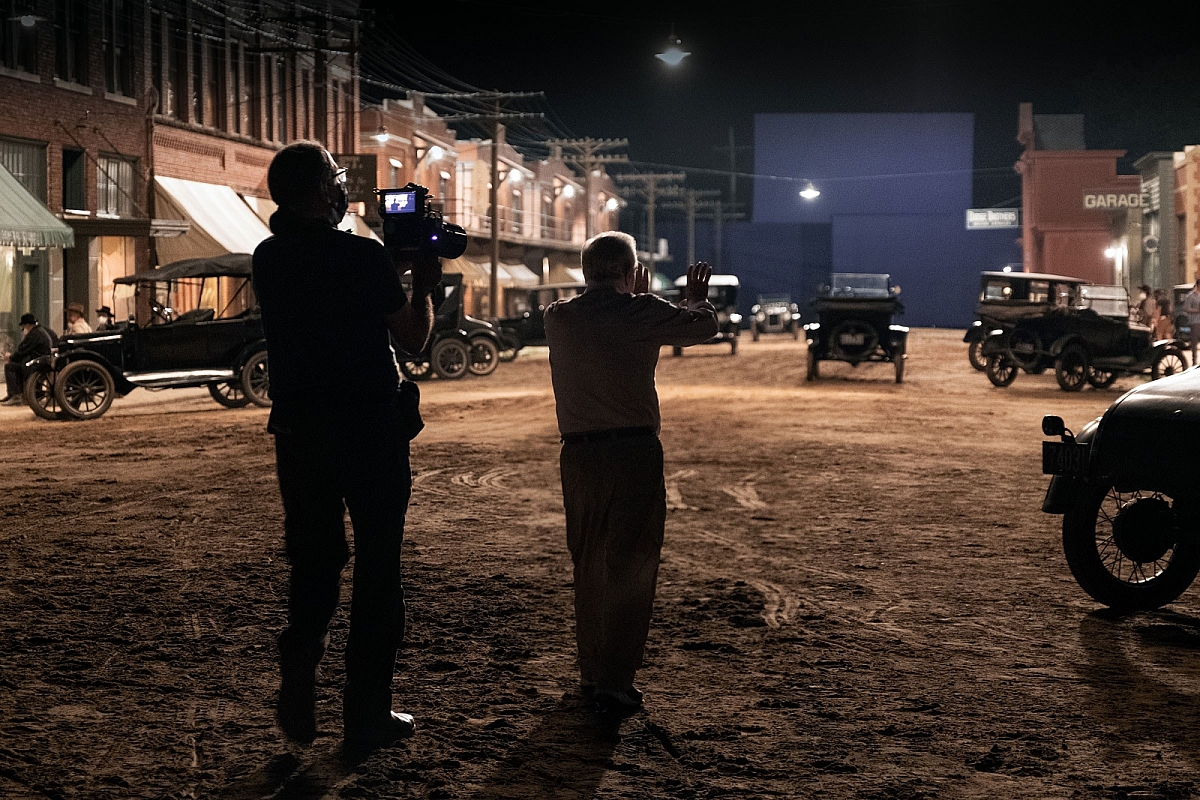
DP Rodrigo Prieto AMC ASC and director Martin Scorsese during production on KILLERS OF THE FLOWER MOON. Photo by Melinda Sue Gordon. Courtesy of Apple.
New façades were constructed for stores and businesses, in the town of Pawhuska, with a huge volume of dirt needed to cover the road surfaces. The homes of the main characters were constructed specifically for the film, as accurately as possible in terms of interior/exterior décor and color palettes, and with orientations that would make the most of the sunlight for cinematographic purposes and honor the position of the sun in Osage rituals.
Speaking about his aesthetic approach to the film, Prieto remarks, "I knew Marty wanted to tell a strong, powerful story in a visually realistic way that also honored the Osage. So, I went back to the idea I presented to him when we shot The Irishman, which was the notion of evoking the memory of a certain era through stills photography of the time. I prefer to take my visual inspirations from real stills and to observe where the camera is in relation to the light.
"I did a lot of research into that period, including reading David Grann's book. So did the art department, who had amassed an incredible array of photos. Everything you see in the film – every set-piece, every part of the production design and the lighting – is based on those old photographs. And that was very helpful to me in the early stages of my work."
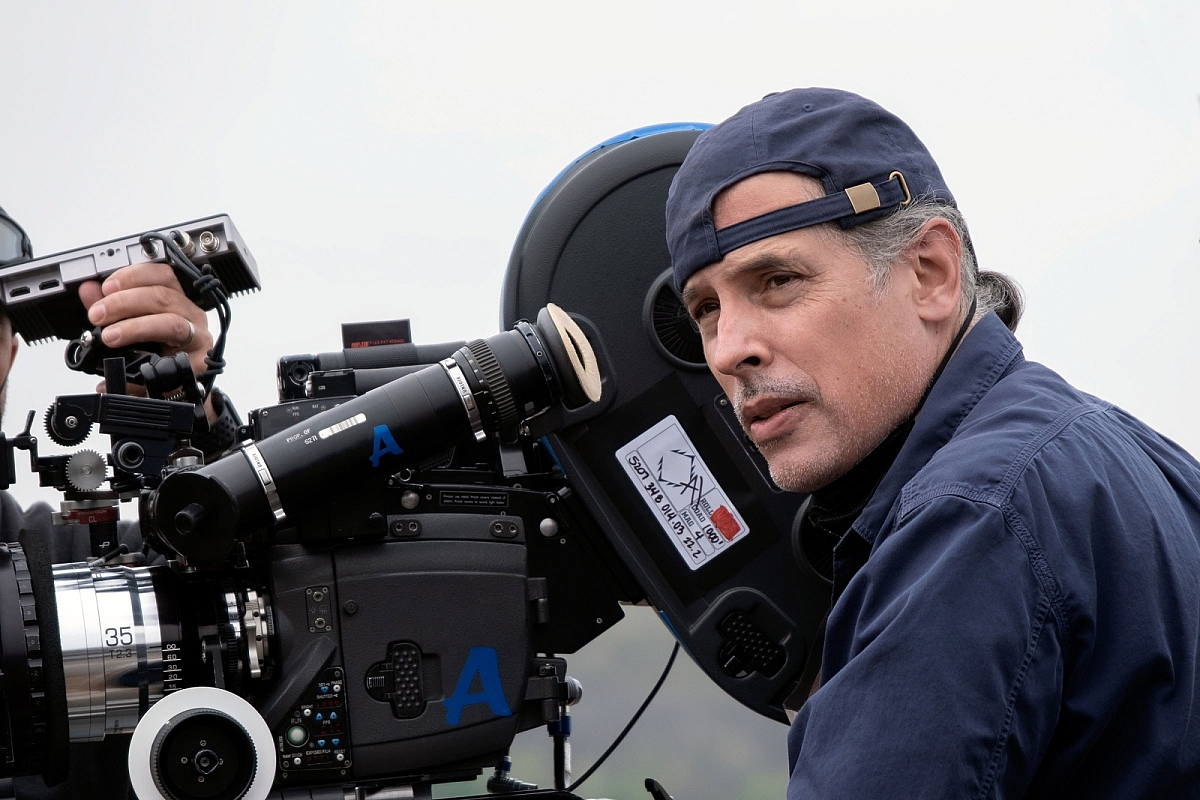
DP Rodrigo Prieto AMC ASC at the camera during production on Martin Scorsese's KILLERS OF THE FLOWER MOON. Photo by Melinda Sue Gordon. Courtesy of Apple.
He continues, "During my research into color, and early techniques to create color on film, the muted color palette of Autochrome – which was pioneered by the Lumière brothers around 1903 – had great visual appeal to me. I thought that would be an appropriate look for the scenes involving Ernest Burkhart, William King Hale and the descendants of European immigrants, since it is a photographic technique imported from Europe.
"Through more research, and especially by spending time with Osage people, I came to a great understanding of how their view of the world is connected to nature, and the importance of the sun in their lives and rituals. So, I determined that the look of these scenes should reproduce colors in a naturalistic way, just like Kodak film negative printed on Kodak print stock does.
He adds, "For moment when Mollie's sister's house explodes, and Ernest's feelings of guilt and confusion grow deeper, I switched to a Technicolor ENR-process look that is contrasty with particularly rich blacks but subdued colors. As the movie is a representation of real events, we also wanted to include hand-cranked newsreels footage at the beginning and a radio show telling the story of the Osage at the end."
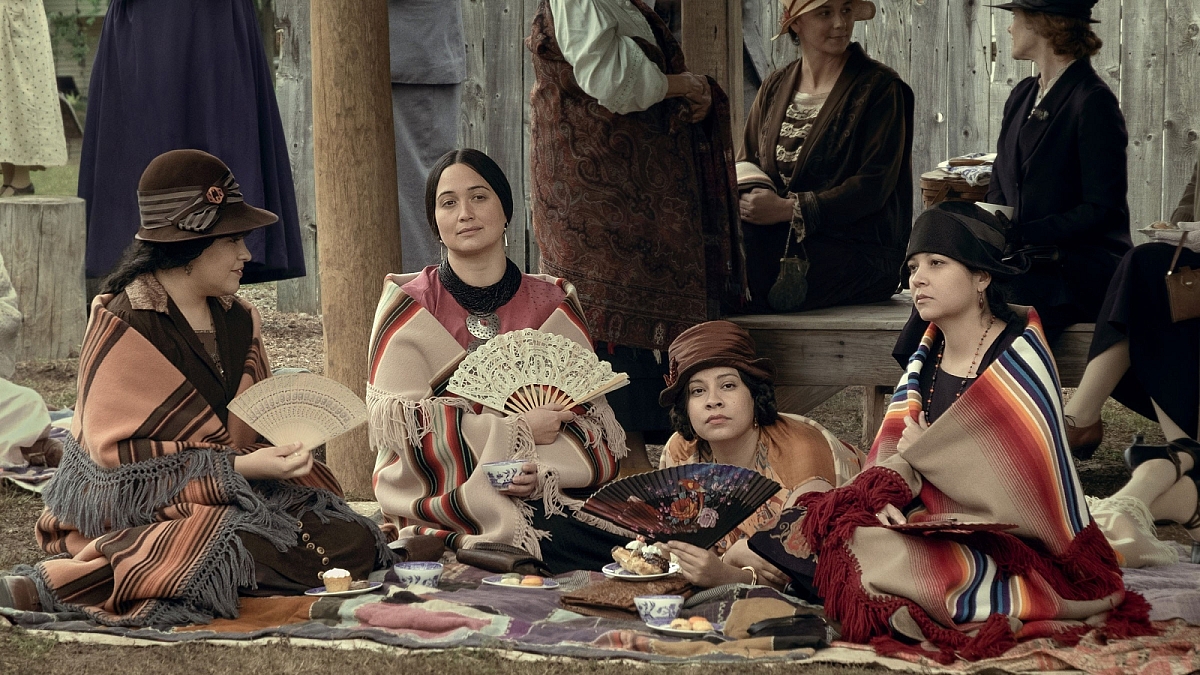
A scene from KILLERS OF THE FLOWER MOON, directed by Martin Scorsese. Photo by Melinda Sue Gordon. Courtesy of Apple.
As for shooting the movie in analog, Prieto remarks, "Film is always Marty's preference, and it was never in doubt that Killers of the Flower Moon would be shot on 35mm film. It has the color depth to impact landscapes and shots of nature, the color fidelity to render the nuances of different facial skin tones, and the textures to evoke emotional responses amongst the audience."
After extensive testing Prieto settled on filming with ARRICAM ST and LT 35mm cameras, using Panavision T-series optics, modified by lens guru Dan Sasaki, to help emulate the Autochrome look, along with Petzval Anamorphic lenses to capture shots of the murder victims. The hand-cranked newsreel footage that features in the film was taken using Scorsese's own 1917 Bell & Howell 35mm camera, which needed some repairs and adjustments by Panavision to make it ready for the production environment. A small number of ultra-low light shots and aerials used a digital camera.
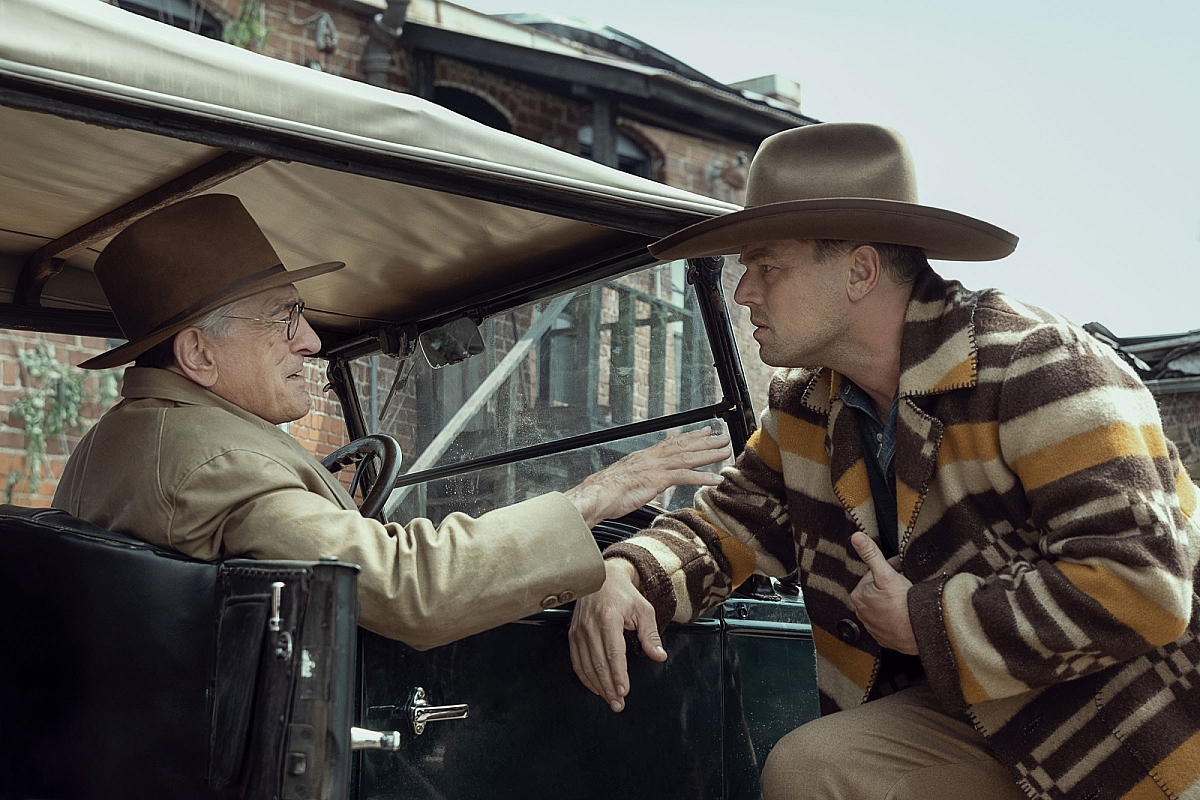
A scene from KILLERS OF THE FLOWER MOON, directed by Martin Scorsese. Photo by Melinda Sue Gordon. Courtesy of Apple.
"I am not aware of there being any Anamorphic lenses from the 1920s, and I knew the sharpness of modern Anamorphic optics would look incongruous," says Prieto. "To achieve the period-style look I wanted, Dan adapted the T-series optics by changing the coatings in a way that softened and warmed the image, especially the flares.
"Dan was also very clever in producing an Anamorphic version of the Petzval and giving it a gentle swirling background curvature that helped me create a particular visual emphasis when we photographed the murder victims."
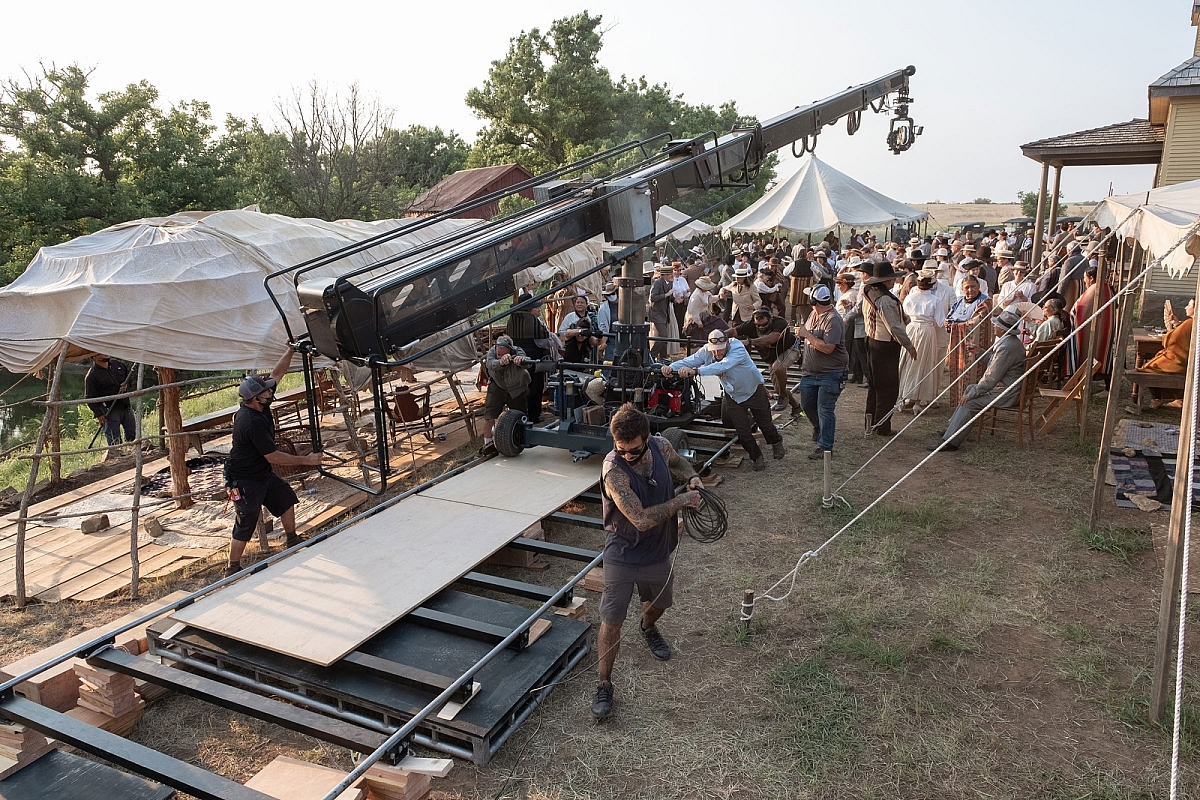
Behind the scenes on the set of KILLERS OF THE FLOWER MOON.
Prieto selected a quartet of KODAK VISION3 35mm filmstocks as the foundation from which the movie's different looks would emerge during final postproduction: 250D 5207 for most of the daytime interior/exterior scenes; 50D 5203 for some of the exterior shots of Osage rituals; 500T 5219 for night scenes and interiors lit with Tungsten fixtures; and EASTMAN DOUBLE X 5222 Black & White film for the newsreel footage.
Film processing, dailies and 4K scans were done at FotoKem in Los Angeles. The final color grade was completed by Yvan Lucas at Company3, who had been a key collaborator with Prieto in helping to develop the variety of aesthetics from the very earliest stages of testing.
"I enjoy shooting on film very much," says Prieto. "I still feel its colors are the most visually satisfying, and there's something about the contrast, the randomness of the grain, the way shadow and highlight details are reproduced in the filmed image that you just cannot create digitally in-camera, even with LUTs. So, originating on 35mm film really was integral to the way this production ended up looking.
"For example, the 250D faithfully reproduced what was in front of the camera, with no artifice getting in the way, and was the foundation of the engaging and genuinely gripping atmosphere of the Autochrome look for the scenes featuring William Hale, Ernest and their cronies," he says.
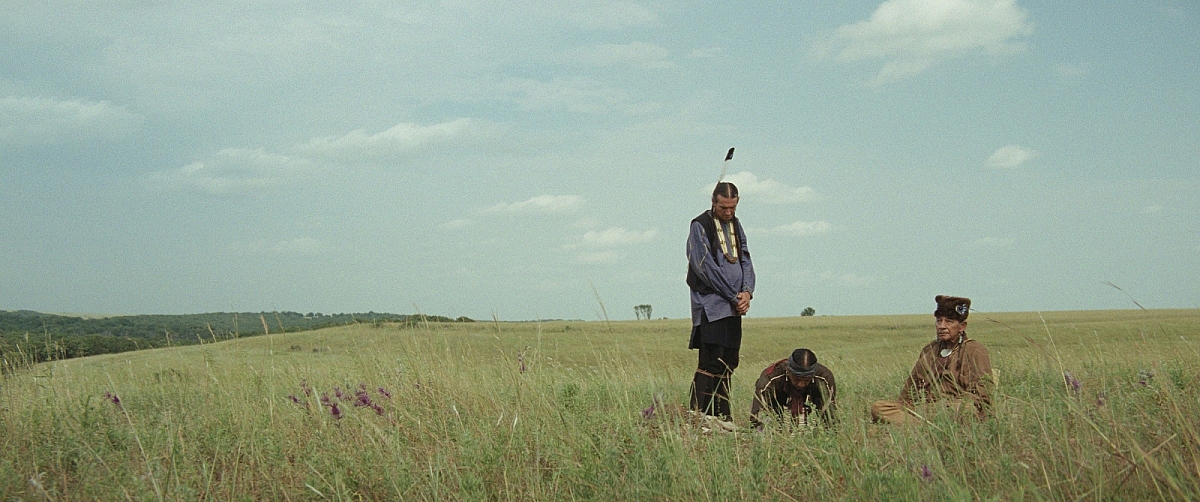
A scene from KILLERS OF THE FLOWER MOON, directed by Martin Scorsese. Photo by Melinda Sue Gordon. Courtesy of Apple.
"The 50D is great in bright daylight situations, full of rich color, contrast and details, and was the perfect way to represent nature, the epic landscapes and the Osage rituals. The tonality and contrast of the DOUBLE-X 5222 B&W negative brought an authentic look to our newsreel footage, which is really hard to emulate digitally. And, of course, the 500T is a versatile, workhorse stock that you can use for all sorts of interior/exterior day/night situations."
Prieto is full of praise for his camera and lighting team. "I had Scott Sakamoto on A-camera/Steadicam, who is a real master operator and did an especially good job on the long, single shots we designed. He was ably assisted by the incomparable Trevor Loomis on focus, who also hand-cranked the Bell & Howell 35mm camera.
"I was fortunate to have Donald Reynolds heading our grip team, wrangling dollies, tracks and cranes in our many setups, and gaffer Ian Kincaid, with his skills in empathic lighting on the Osage, and more shadowy, harsh and sometimes downright ugly illumination on William Hale, Ernest and their nefarious activities. I also have to thank Ellen Kuras ASC for directing the second unit, shot by Darren Lew."
Looking back at his experience of shooting, Prieto concludes, "It was a complex and powerful experience that stretched me as a cinematographer, but also as a person. I admire Marty so much, and I really enjoyed the challenge of creating different visual looks to evoke different emotional experiences. Once again, we put our faith in film, and its ability to support dramatic storytelling, and were rewarded with a result of which both myself and Marty are very proud."